Poker Chip Values: Complete Guide to Colors, Denominations, and Usage
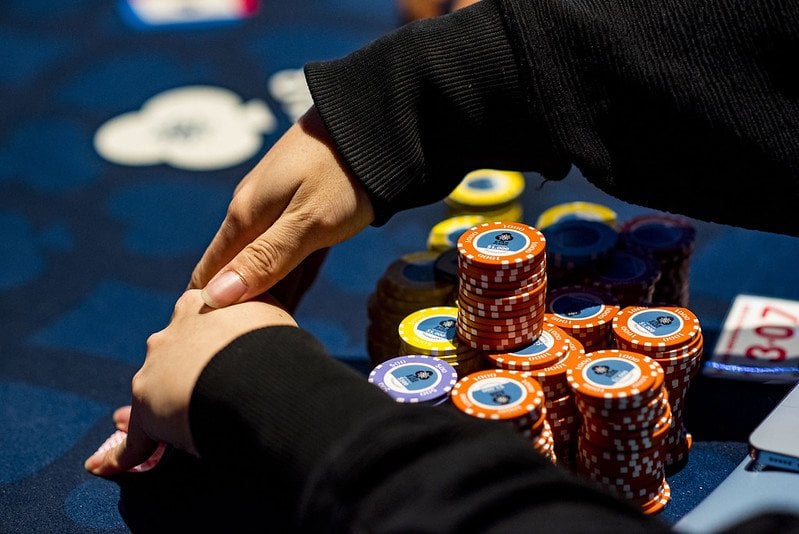
Poker chips come in many colors and denominations, forming the backbone of casino and home games.
Poker chips are essential items at the heart of every live poker game. Understanding chip values and color systems is vital for both casual players and tournament organizers to ensure every game runs smoothly. This comprehensive guide covers everything you need to know about poker chip colors, denominations, distribution, and functionality—from casino tables to home games and the world’s largest tournaments.
- Common Casino Poker Chip Values
- Poker Chip Denominations in Cash Games
- Tournament Poker Chip Systems
- Specialty Chips and Unusual Denominations
- Chip Colors Used at Major Poker Tours
- Chip Value Choices for Home Games
- Proper Poker Chip Stacking and Etiquette
- Frequently Asked Questions
Common Casino Poker Chip Values and Color Codes
Across casinos and card rooms, poker chip color schemes tend to follow a set of commonly accepted denominations, especially in North America. While not universally standardized, most venues assign their chips values and colors from this list:
- White: $1
- Red: $5
- Orange: $10
- Green: $25
- Black: $100
- Purple: $500
- Dark Red (or Yellow/Orange): $1,000
Chips in cash games are synonymous with their cash value—a $25 chip literally exchanges for $25 at the cashier. In contrast, chips for tournaments represent tournament points only and hold no real currency outside of the event. Tournament chips are often assigned higher or even custom denominations, with play chips removed and replaced by larger-value chips as action progresses.
Poker Chip Denominations in Cash Games
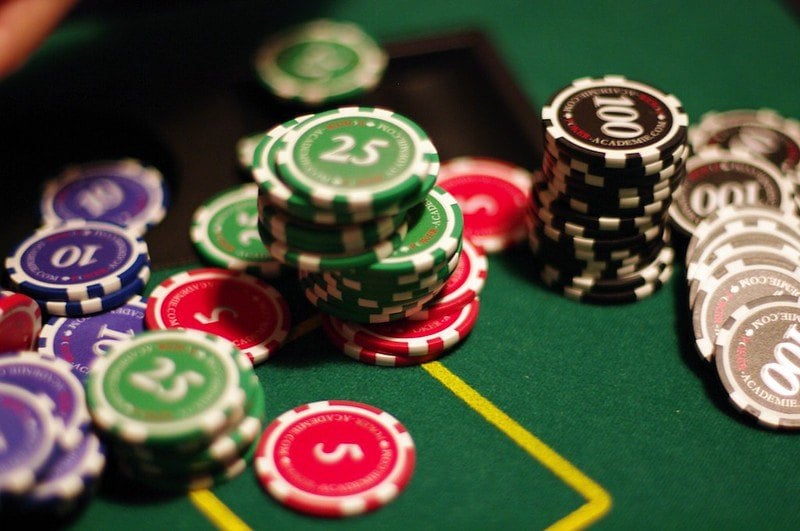
Image credit: LLudo/Flickr, CC BY-NC-SA 2.0
Cash games use casino chips that carry direct monetary value. Although slight differences in colors and denominations exist from venue to venue, chip colors are surprisingly consistent to help regular players adapt quickly. Here are the typical denominations found at most cash game tables:
- White or Grey: $1
- Red: $5
- Blue or Orange: $10
- Green: $25
- Black: $100
- Purple: $500
- Yellow, Dark Red, or Orange: $1,000
- Red-White-Blue: $5,000
- Red-Blue: $25,000
- Grey-Orange: $100,000
Red ($5), green ($25), and black ($100) chips are the most common across casinos worldwide. While chips with values above $1,000 are reserved for high-stakes play, they’re available in premier poker venues—Aria’s Red-White-Blue $5,000 chips are a favorite of high rollers.
Tournament Poker Chip Systems: Colors and Color-Up Procedures
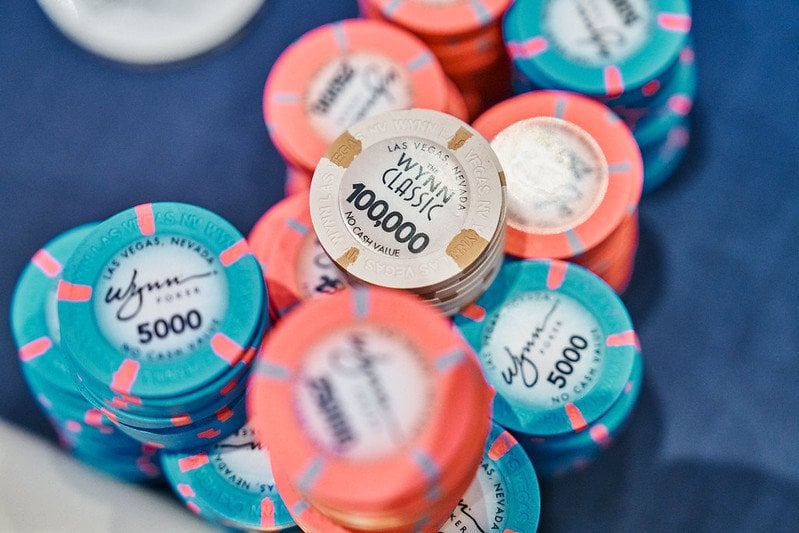
Image credit: World Poker Tour/Flickr, CC BY-ND 2.0
Unlike cash games, tournament chip values vary widely depending on the event, organizer, or tour. Each major poker series often uses their own custom chip sets, both in terms of denominations and colors. Always double-check chip values before you play—each chip will have its current value indicated in the center.
As a tournament progresses, small-denomination chips quickly become cumbersome compared to the higher blinds. To keep play manageable and chip stacks clean, event organizers periodically swap out the lower-value chips through a process called “color-up.” Here’s how it works:
- When smaller denomination chips no longer serve a role (for example, blinds go above the 100-chip), tournament staff exchange players’ smaller chips for fewer, higher-value chips of equal total value.
- This color-up prevents excessive chip clutter and accidental miscounts as the blinds rise and overall chip pools grow.
- Color-ups occur at several stages—removing 25, then 100, 500, and eventually higher denomination chips as needed.
For example, in the European Poker Tour (EPT), chips may be distributed as follows:
- Green: 25
- Black: 100
- Purple: 500
- Red: 1,000
- Yellow: 5,000
- Blue: 10,000
- Grey: 25,000
- Pink: 50,000
In major events like the WSOP, chips worth up to 1,000,000 or 5,000,000 may be brought into play during late stages.
Example Color-Up Procedure
- You hold 30 chips valued at 100 each during the 1,000/2,000 blind level.
- A tournament staff member collects your 30 chips, then gives you three chips valued at 1,000 each.
- Your stack remains the same value-wise (3,000), but you now have far fewer chips to count and manage.
Specialty Poker Chips and Alternative Sizes
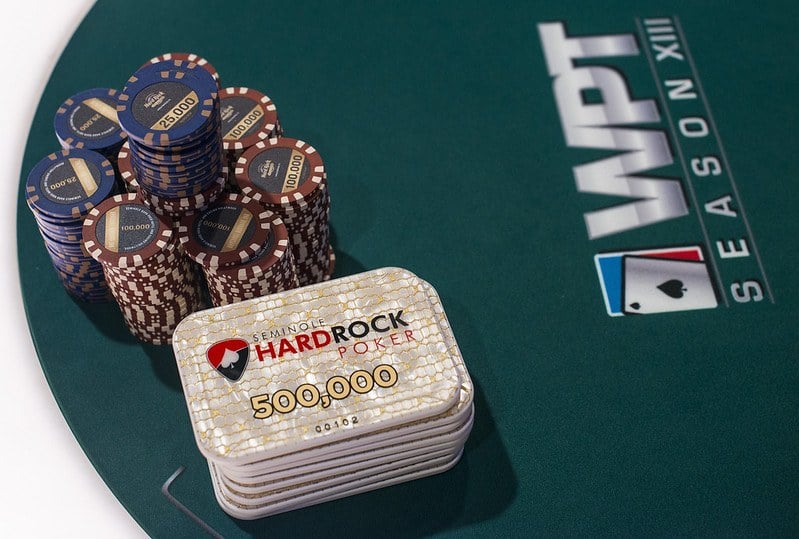
Image credit: World Poker Tour/Flickr, CC BY-NC 2.0
While most poker chips are circular and only vary by color and denomination, you might see larger or differently shaped chips in certain situations. Oversized round chips—sometimes introduced at the high-denomination stage of tournaments—make it easy for everyone to see how many large-value chips each player holds, reducing the chances of miscount or deliberate deception. Rectangular plaques, typically representing very high stakes such as $25,000 or $100,000, appear in both high-limit cash games and tournament settings.
Uses for oversized or specialty chips include:
- Representing extremely large denominations (e.g., $25,000 or more)
- Serving as bounty markers in knockout tournaments
- Tracking “time bank” allocations or other special gameplay elements
These design variations help prevent errors and keep high-value play clear and organized.
Chip Colors Used at Major Poker Tours
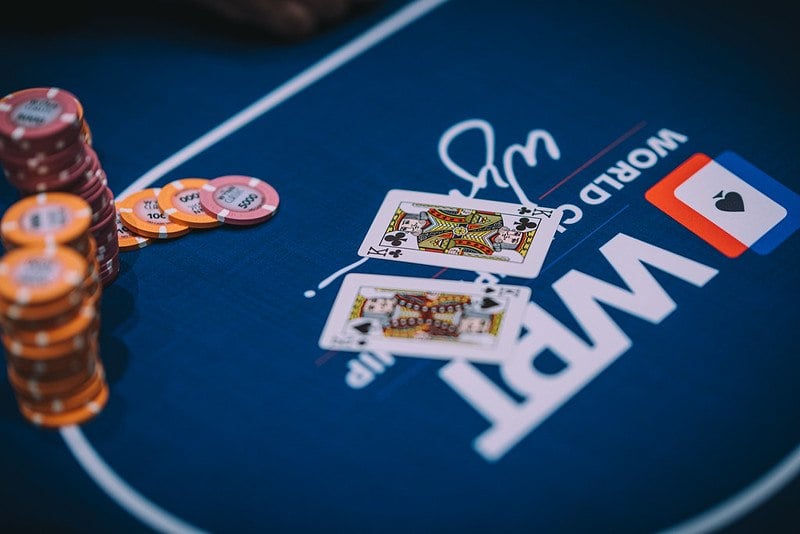
Image credit: World Poker Tour/Flickr, CC BY-ND 2.0
Leading tournament circuits maintain their own standardized chip sets to boost consistency and ease of use across events. Below are the typical color/value breakdowns for the world’s top tours:
World Series of Poker (WSOP) Common Chip Values
- Green: 25
- Black: 100
- Light Blue: 500
- Yellow: 1,000
- Orange: 5,000
- Dark Green: 25,000
- Lavender: 100,000
- Beige: 250,000
- Red (oversized): 500,000
- Yellow (oversized): 1,000,000
- Purple (oversized): 5,000,000
World Poker Tour (WPT) Typical Chip Denominations
- Black: 100
- Red: 500
- Yellow: 1,000
- Blue: 5,000
- Green: 25,000
Configuring Poker Chip Values for Home Games
If you’re hosting a private poker night, planning the chip distribution and values ahead is crucial to ensure a fair and enjoyable experience.
Example 1: $1/$2 Cash Game, $200 Starting Stack
| Chip Color | Value | Quantity (Per Player) |
|---|---|---|
| Grey | $1 | 20 ($20) |
| Red | $5 | 16 ($80) |
| Green | $25 | 4 ($100) |
Players have enough low-value chips for blinds, with most of their stack in higher-value green chips for efficient betting. Dealers can make change as needed using the $5 and $1 chips.
Example 2: $2/$5 Cash Game, $1,250 Stack
| Chip Color | Value | Quantity (Per Player) |
|---|---|---|
| Grey | $1 | 5 ($5) |
| Red | $5 | 49 ($245) |
| Green | $25 | 20 ($500) |
| Black | $100 | 5 ($500) |
Most value is loaded in $25 and $100 chips, while a handful of $1s handle small blinds and odd amounts. The dealer can exchange reds for ones through the evening.
Example 3: Home Tournament, 10,000 Starting Chips (25/50 Blinds)
| Chip Color | Value | Quantity (Per Player) |
|---|---|---|
| Green | 25 | 20 (500) |
| Black | 100 | 20 (2,000) |
| Blue | 500 | 3 (1,500) |
| Yellow | 1,000 | 6 (6,000) |
Assign the chips to reflect your chosen structure, and make sure everyone knows the system before play begins. If using chips already marked with denominations, simply adopt those values for your home tournament.
For regular home tournaments, investing in a dedicated set that includes denominations like 25, 100, 500, and 1,000 is recommended for simplicity and ease of color-up throughout the event.
Proper Poker Chip Stacking and Table Etiquette
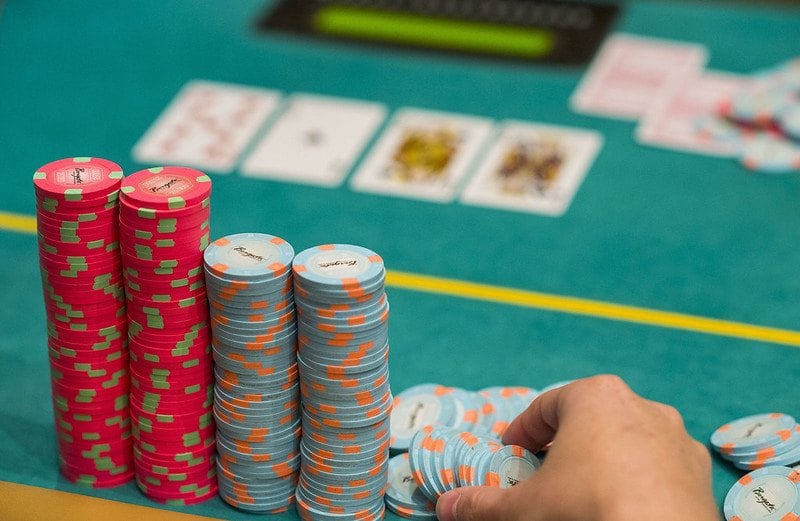
Image credit: World Poker Tour/Flickr, CC BY-NC 2.0
Stacking your poker chips neatly is a key aspect of poker table etiquette. While advanced players may use stacking and shuffling techniques to conceal their true skill, proper stacking helps facilitate rapid play and transparency for everyone—including the dealer.
- Always arrange your chips in uniform stacks of 10, 20, or other convenient multiples.
- Keep your stacks organized by color and denomination—this lets others quickly estimate your chip count.
- Restack your chips regularly, especially in tournaments as blinds increase and chip distribution changes.
Organized stacks not only show respect for the game but also help keep play moving efficiently.
Poker Chip Values: Frequently Asked Questions
How much are poker chips worth?
In cash games, the value displayed on the chip reflects its actual cash value: a $25 chip is redeemed for $25 at the cash desk. In tournaments, chips represent points and have no cash equivalence outside the event.
Which poker chip color represents the highest value?
Purple $500 chips are often the highest denomination in typical casino play, though some venues issue chips or plaques up to $100,000 or more (e.g., Aria’s $5,000, $25,000, and $100,000 chips).
What color indicates the lowest value chip?
Usually, $1 chips are colored white or grey and are universally the lowest-value chips in most casino poker rooms.
How many chips do you receive when starting a poker game?
The amount depends on the type of game and the venue. Cash games may provide as few as a single high-value chip, while tournaments typically start players with a mix of around 50 chips in various denominations to cover the blinds and betting structure.
How do you assign values to poker chips in a home game?
Host organizers choose chip values based on their preferred cash or tournament format. For best results, stick with a system where each color has an obvious ascending value and make sure all players know the breakdown before starting.
Can poker be played without chips?
Yes. While chips are standard in most live games, any clear representation of value—such as cash, coins, or homemade markers—can be substituted for chips in private games if necessary.
Lead Image: World Poker Tour/Flickr, CC BY-ND 2.0








